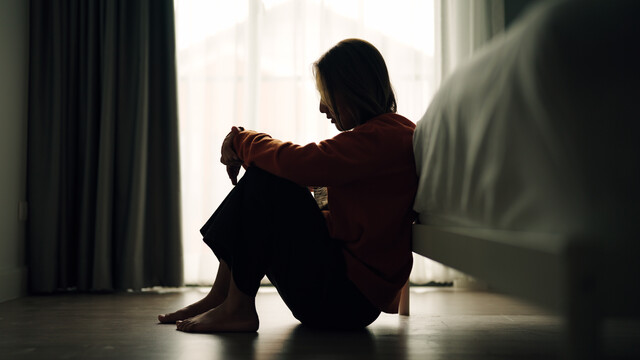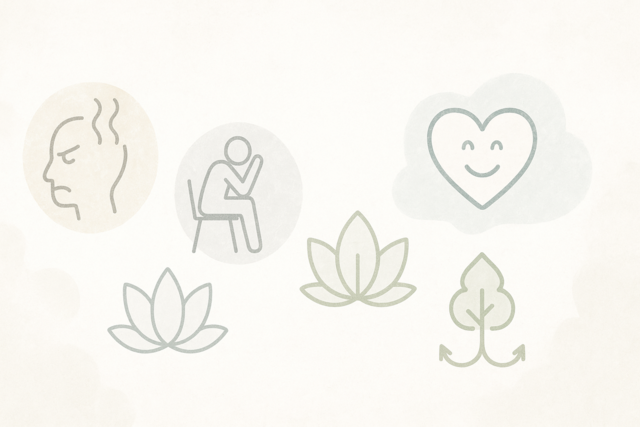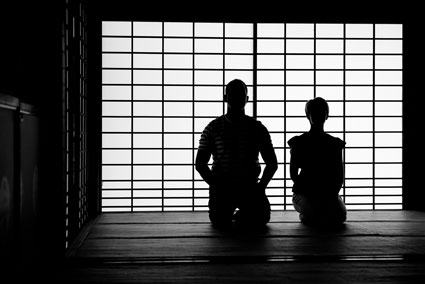?
Introduction
In this article, we will discuss panic disorders, how this condition differs from regular panic attacks, and how they are best treated. Additionally, you will review the common symptoms and triggers that induce fear and anxiety in those with panic disorder.
Definition and Overview of Panic Disorder
Panic Disorder is characterized as a pattern of unpredictable episodes of intense fear, panic, or anxiety. Often unexpected by those who suffer from them, panic attacks can be extremely debilitating. In extreme cases, the anxiety brought about by panic attacks can interfere with work, relationships, and daily life.
More than six million people in the United States suffer from panic attacks, and the condition affects twice as many women as men. And although everyone, at one time or another, has experienced a bout of panic, living with a panic disorder is decidedly different. Approximately 2.4 million people experience panic attacks so frequent and severe, that they fall under the label of a disorder.
Normal panic is an emotional and biological response to danger -- for instance, if your car veers out of control onto the side of the road. In this case, your panic is well founded and the resulting "fight or flight" hormones that are released help you to deal with the issue at hand. However, in the case of panic disorder, an individual repeatedly experiences high levels of anxiety and terror in response to specific "triggers," which may or may not be realistically frightening.
Each person's triggers are different. For some, it may be a fear of rodents -- to the point that they fear being eaten alive by mice or rats if they so much as see any evidence of one. For other people, it may be the fear of something seemingly more benign, such as balloons or clowns. Regardless of the trigger, people suffering from ongoing panic attacks can become completely immobilized when they come across the object of their fears.
Additionally, many people with panic disorder experience symptoms out of the blue, without any apparent trigger.This can cause intense anxiety, as an individual can never be sure where, or when, he will experience a bout of panic. The person is usually uncomfortable in unfamiliar circumstances and constantly fearful if they will be able to make it out of the circumstance without embarrassing or harming themselves. Understandably, this element of uncertainty can cause many with panic disorder to become unsociable and reclusive.
Symptoms of Panic Disorder
Like many forms of anxiety, panic disorder affects both the mind and body. Common symptoms at the onset of an attack include:
� Shortness of breath
� Dizziness/light-headedness
� Heart racing or heart palpitations
� Feeling confused
� Shakiness
� Numbness
� Sudden increase in perspiration
� A feeling of having a heart attack
Agoraphobia
In some cases, panic disorders can lead to agoraphobia. Most people understand this as a "fear of open spaces," but it is usually has the opposite effect. A person with agoraphobia is usually extremely claustrophobic and has a fear of enclosed spaces or constricted places. It is not uncommon for someone with agoraphobia to examine an unfamiliar home or building to locate all of the exits for ease of exit in the event of a panic attack.
People who suffer from agoraphobia usually do not like to go to our to public or crowded places.
Causes of Panic Attacks
Like many forms of anxiety, it is not known exactly why panic disorder occurs, but there are factors which seem to contribute to, or exacerbate the condition.
Genetics can play a role in whether someone develops panic disorder. Studies have shown that children with one or both parents with the condition are more likely to develop it themselves.
Extreme Stress can also lead to the development of panic disorder. Some people are biologically unable to handle stress as well as others. If they have been through a particularly stressful experience, it can cause them to be over-sensitized and the "fight or flight" switch to become stuck in the "on" position. As a result, they may experience bouts of panic on an ongoing basis, with seemingly little or no provocation.
Neurotransmitter abnormalities are also thought to play a role in panic disorder. An imbalance of critical brain chemicals can lead to the illusion that situations are more threatening than they truly are. In addition to hormone and neurotransmitter abnormalities, differences in the shape and amount of blood flowing to the brain may be a factor as well.
Substance Abuse can, over time, cause damage to the brain, as well as cause a distorted sense of reality and heightened sense of anxiety. This can aggravate or even induce panic disorder. The episodes may lessen if the abuse of drugs or alcohol is discontinued, but there are often long-term residual effects.
Diagnosing Panic Disorder
As mentioned above, many of the symptoms of panic disorder are physical, so it may initially be hard to distinguish from things such as a heart attack, or problem with the nervous system. However, if you are experiencing one or more of the symptoms above, your physician will run tests to rule out the obvious physical ailments. If none of these proves to be the culprit, then you will be referred to a mental health professional for evaluation and potential diagnosis of an anxiety disorder.
During the evaluation, the psychiatrist will question the patient regarding their bouts of panic, how long they last, what seems to trigger them, and how intense they feel. The doctor will then evaluate that information, along with observations of the patient's demeanor during the visit, in conjunction with the patient's complete medical and family history. All of this information will be carefully weighed before a diagnosis is made.
In regards to the physical manifestations, in order to be classified as a panic attack, you must experience at least four of the symptoms listed in the previous section on a fairly regular basis. Additionally, the intensity of the attacks must reach a peak and then begin to subside within 10 minutes.
Treating Panic Disorder
There are many ways in which panic disorder may be treated. Each patient -- and their particular fears -- are unique; the doctor will work to find the most effective treatment protocols for each individual. This may mean using one mode of treatment, or a combination of therapies. In addition to a possible initial prescription of anti-anxiety or anti-depression medication, the practitioner may employ one or more of the therapies below:
Cognitive Therapy works by teaching the patient to examine the symptoms they are experiencing in an objective manner. Once they clearly understand this, they can work on resolving the reason for the anxiety and thus reduce their symptoms.
Introceptive Exposure � Most people are loath to willingly experience discomfort or panic. However, this therapy seeks to recreate the feelings and emotions that lead to panic in an isolated/controlled setting in order to both understand and hopefully control the anxiety. This can be an extremely daunting task and for many people, it is necessary to take baby steps in exposing themselves to potential trauma. With this therapy, the repeated exposure to the object of fear will over time show that it is truly harmless, and eventually release the hold it has over the patient.
Breathing exercises -- Many of the symptoms of panic disorder affect the central nervous system and respiratory system. Individuals experience dizziness, heart racing and breathlessness during panic attacks. Teaching a patient to control their breathing patterns can be helpful in reducing the severity of the attack.
In addition, when someone panics, their breath becomes quick and shallow. This results in less oxygen to the brain, which can impair cognitive function. This understandably makes it harder to get a hold of oneself and recognize that the fear is unfounded. By learning to take control and bring breathing patterns back to normal, the person is more likely to recover from the episode. Employing deep breathing techniques at the onset of an attack can be an effective symptom management tool.
Alternative Health Therapies
Some traditional or alternative health practitioners may prescribe therapies designed to restore a balanced mind/body connection and teach the patient relaxation techniques that can be used to eliminate or reduce the severity of panic episodes. Some of the most effective alternative therapies include:
Hypnotherapy can work to reprogram the patient's subconscious to respond differently to a panic trigger. Through hypnosis, the fear can be evaluated and the hypnotist offers suggestions that show the fear for what it is, or gives the patient hypnotic suggestions on how to better handle it.
Aromatherapy employs the use of essential oils derived from plants to bring about changes in mood. These plant essences are powerful and are used in many alternative health modalities. Essential oils, such as lavender and chamomile, have the ability to induce calm. Placing a handkerchief with a few drops of oil over the nose and inhaling can help to stop a panic attack in its tracks.
























